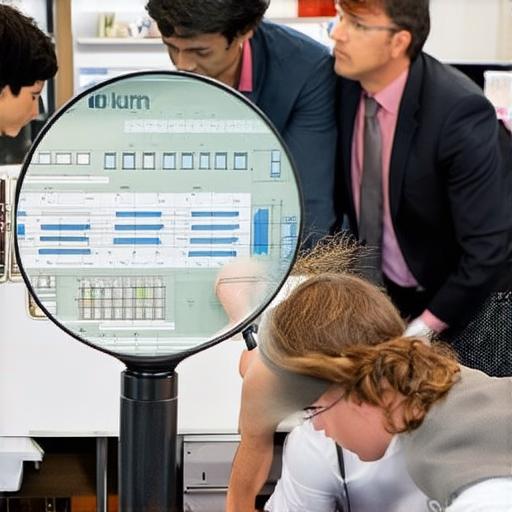A dedicated project team is a group of highly skilled individuals who work together to achieve a common goal. However, even the most talented and experienced team members can have weaknesses that may impact their performance and ultimately the success of the project. In this article, we will explore some strategies and best practices for identifying and addressing these weaknesses in order to create a more effective and efficient team.
1. Conduct a thorough assessment of the team’s strengths and weaknesses
The first step in identifying weaknesses in a dedicated project team is to conduct a comprehensive assessment of their strengths and weaknesses. This can be done through various methods, such as self-assessment surveys, peer reviews, and performance metrics. The information gathered from these assessments will provide valuable insights into each team member’s skills, abilities, and areas for improvement.
2. Set clear goals and expectations
Once the weaknesses of the team have been identified, it is important to set clear goals and expectations for each team member. This should include specific objectives that are aligned with the overall project goals, as well as a plan for how progress will be measured and tracked. By setting clear expectations, team members will be better equipped to understand their roles and responsibilities and work towards improving their weaknesses.
3. Provide training and development opportunities
One of the most effective ways to address weaknesses in a dedicated project team is to provide training and development opportunities. This can include courses, workshops, and on-the-job training that are designed to help team members improve their skills and knowledge in areas where they may be lacking. By investing in their team members’ development, project managers can help create a more well-rounded and effective team.
4. Encourage open communication and collaboration
Effective communication and collaboration are essential for any team, but they are particularly important when weaknesses are present. Project managers should encourage team members to openly communicate their struggles and share best practices for overcoming them. Collaboration can also help team members learn from each other’s experiences and develop new skills that may be useful in addressing their own weaknesses.
5. Monitor progress and provide regular feedback
Project managers should regularly monitor the progress of their team members and provide regular feedback on their performance. This can include one-on-one meetings, performance reviews, and progress reports that are shared with the entire team. By providing regular feedback, project managers can help team members identify areas where they need to improve and track their progress over time.
6. Use data and analytics to inform decision making

Data and analytics can be powerful tools for identifying weaknesses in a dedicated project team. For example, project managers can use performance metrics such as task completion rates, error rates, and cycle times to identify patterns and trends that may indicate areas where specific team members are struggling. This information can then be used to inform decision making and provide targeted support to team members who need it most.
Case Study: Addressing Weaknesses in a Software Development Team
Let’s take a look at a real-life example of how these strategies were used to address weaknesses in a software development team. The team consisted of six developers, each with their own unique set of skills and areas for improvement. After conducting a comprehensive assessment of the team’s strengths and weaknesses, the project manager identified that one developer was struggling with debugging code, while another was having difficulty with version control.
To address these weaknesses, the project manager provided training and development opportunities in both areas. The first developer was given access to online courses and workshops on debugging techniques, while the second developer was assigned a mentor who had expertise in version control. Additionally, the project manager set clear goals and expectations for each team member, including regular progress reports that were shared with the entire team.
Over time, both developers made significant improvements in their areas of weakness. The first developer’s debugging skills improved dramatically, resulting in fewer errors and faster cycle times. The second developer was able to successfully implement version control in their workflow, reducing the risk of conflicts and improving collaboration with other team members.